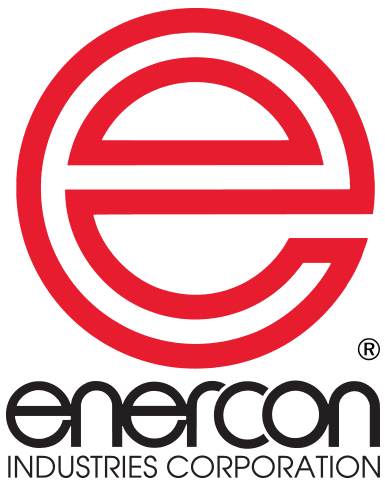Everything You Need To Know About Flame Surface Treatment
The Key to Stronger, More Reliable Adhesive Bonds: Flame Treatment
One of the most important requirements for adhesion is the condition of the surface prior to bonding with inks, coatings and adhesives. Fortunately, there are technologies which can be used to modify surfaces to make them more receptive to bonding. One of the oldest surface treatment technologies known to man is still considered one of the most effective: flame surface treatment.
Flame surface treatment is used for industrial automotive, assembly, decorating, packaging, and window & door applications on plastics, glass, metals, and composites. Today’s flame treaters are technologically advanced offering robust control, repeatability, and safety features.
Benefits of flame surface treatment include stronger bonds, faster line speeds, and improved product quality. Let’s explore how flame treatment works, why it’s effective, and how it can improve your manufacturing processes.
Why Flame Surface Treatment is Needed
Low surface energy materials such as ABS, BOPP, PE, PET, PP, TPU & other plastics are generally composed of non-polar, long-chain molecules with nonporous and hydrophobic surfaces. Their inert low surface energy offers few available bonding sites due to low levels of charged ions on the surface. Material additives & release agents within these plastics can also migrate to the surface and prevent successful adhesion.

Surface contamination is also a factor that can prevent adhesion on low surface energy materials. But surface contamination can also interfere with high energy surfaces such as glass and metal. Contamination can be dust and debris to more significant substances, such as oils often found on metals.
Low surface energy, migrating additives and surface contamination will undermine adhesion success and create the following issues:
– Inconsistent ink, coating & adhesive bonding
– Immediate failure of adhesion
– Bond strength failures when stressed
This is why surface preparation methods such as flame plasma treatment are used to optimize surfaces for proper bonding.
What is flame plasma treatment?
Plasma is the fourth state of matter, with solids, liquids and gas being the other three. Flame is a type of plasma which forms when a hydrocarbon gas and atmospheric air are combined. When surfaces are exposed to a flame plasma treatment they are cleaned, etched and functionalized.
Cleaning Surfaces with Flame Treatment
Cleaning is achieved when the flame plasma removes organic and inorganic surface impurities and contaminants. As plasma species react with the surface, they decompose, volatilize, and vaporize low-molecular-weight contaminants to expose a clean, fresh surface to promote adhesion.
Etching Surfaces with Flame Treatment
Micro-etching of a polymer surface is accomplished as charged ions, neutral atoms, and radicals, in both the plasma forming gas and the reactive process gas, bombard the surface. Increasing surface area creates more bonding sites which promotes adhesion.
Functionalizing Surfaces with Flame Treatment
Flame plasma functionalization or activation is the concurrent process of using radicals and small amounts of UV radiation to break up surface polymer bands to create crosslinking of surface molecules. This process increases polar groups which directly contributes to the surface’s adhesion properties.
The resulting hydroxyl or carboxyl groups increase the surface free energy of the material and in most cases will drastically improve your bond strength. This leads to fewer defective parts, more consistency in production processes, and overall higher quality.

Using Flame Surface Treatment to Improve Adhesion
Flame plasma surface treaters are designed to effectively treat both flat and multi-dimensional surfaces. Its ability to evenly treat contoured surfaces and reach crevices in a single pass makes the technology highly efficient. In contrast, air plasma requires precise control of the distance between the treatment head and the surface for consistent results. Flame treatment is more forgiving due to the depth of the flame, allowing for greater flexibility.
Flame treatment burner heads can be manufactured to virtually any length needed for the application. Flame also requires very little dwell time to create the desired effects on surfaces, making it ideal for high-speed applications.
When used on a production line or as part of a work cell, flame treaters offer various integration options. For simpler applications, a flame treater burner can be mounted in a fixed position, allowing parts to be conveyed underneath for treatment. For more complex treatment paths, the burner can be integrated with a robot or indexing system to ensure consistent and precise treatment.
Flame Treatment Safety
Today’s flame treaters are built with sophisticated fail-safe features to ensure safe operation. Advanced combustion control architecture uses a series of valves, switches, and relays to monitor the entire process. Operations using flame must also ensure there is proper ventilation and guarding around the system to further protect operators.
Improving Your Manufacturing Processes with Flame Treatment
With its reliability, consistency, and repeatability, flame surface treatment can be a game-changer for improving adhesion and streamlining manufacturing workflows. Keep in mind that as the surface area that requires treatment increases, flame treatment systems provide significant economic advantages and throughput efficiency when compared to conventional air plasma systems.
By integrating this technology into your processes, you can ensure product quality by achieving stronger and longer-lasting bonds while increasing your efficiency with a quick and cost-effective treatment process.
Enercon Industries is a leader in surface treatment solutions, offering expertise in flame and plasma technologies to help you achieve optimal adhesion and manufacturing performance. Contact us today to explore how flame surface treatment can revolutionize your production process.


